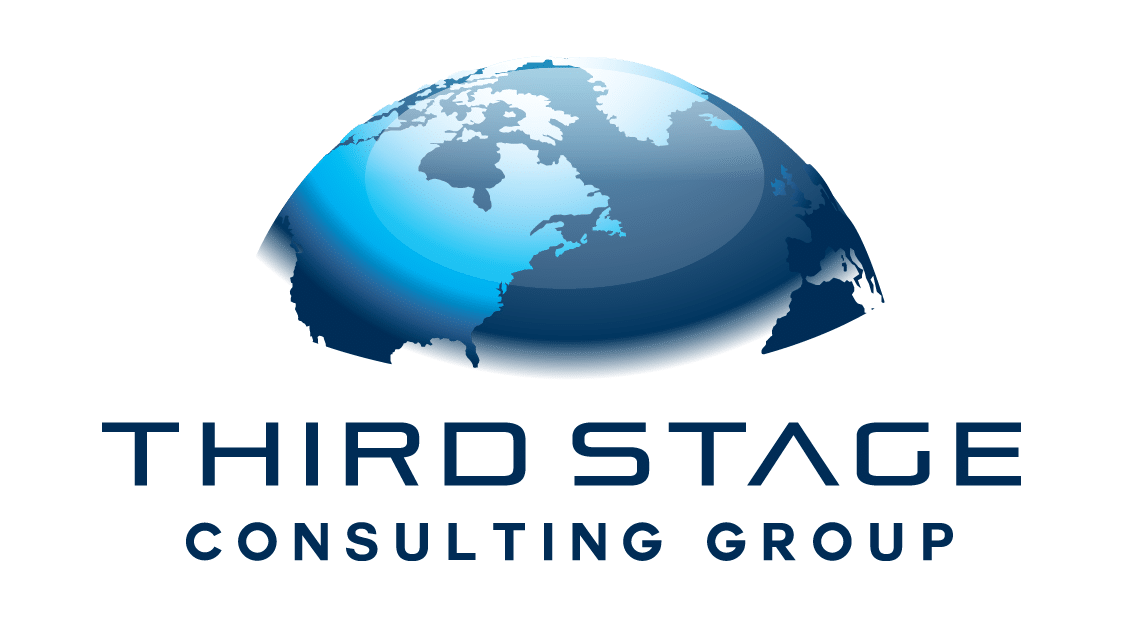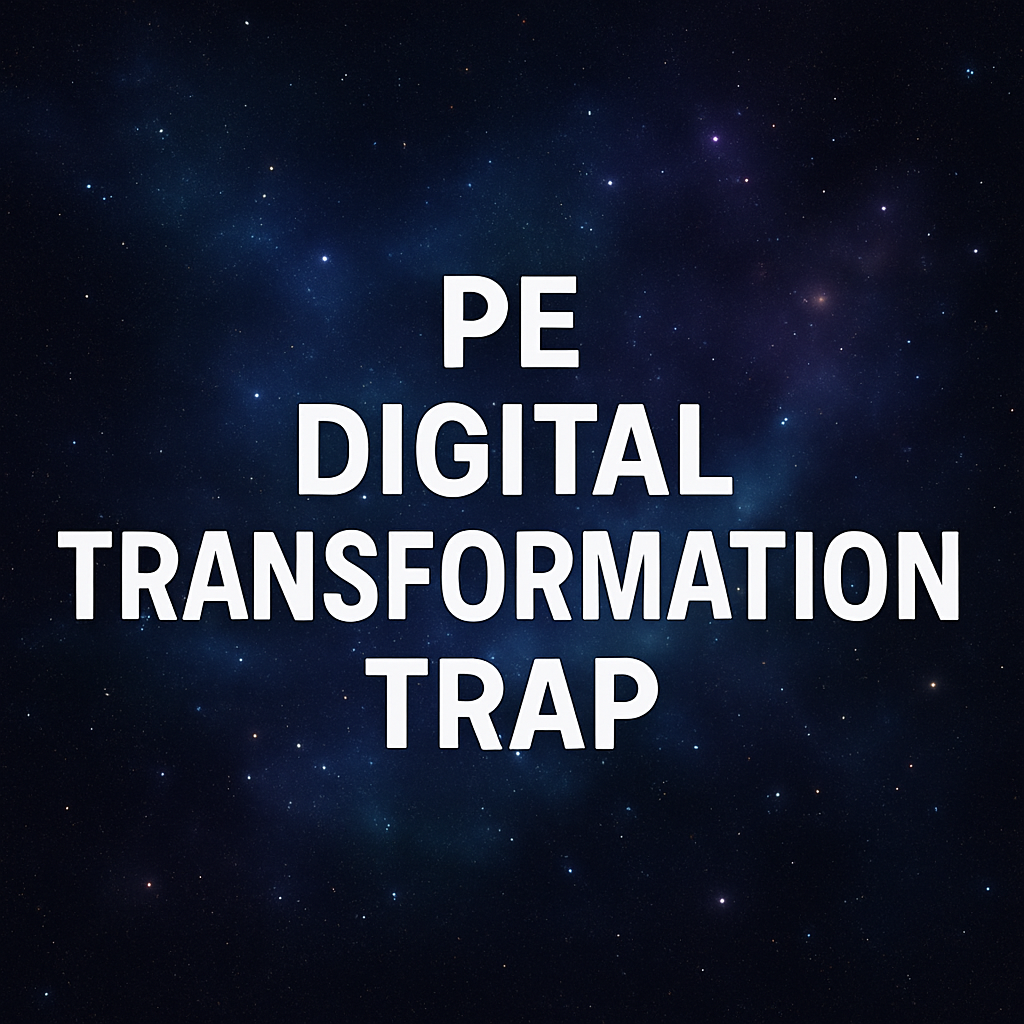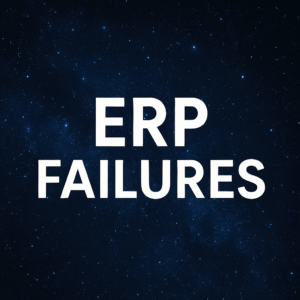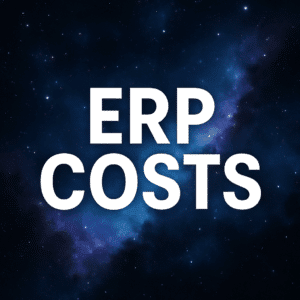Private equity firms don’t invest in companies for fun — they invest to create value.
But what happens when your digital transformation strategy backfires? When instead of improving EBITDA, your tech initiative drains capital, disrupts operations, and adds risk to your exit timeline?
That’s not a hypothetical. It’s what we see far too often in PE-backed companies today.
Let’s break down why so many digital transformations destroy value instead of creating it — and how private equity leaders can protect their portfolios from falling into the same trap.
Table of Contents
ToggleThe Disconnect: Big Promises, Bigger Failures
On paper, digital transformation is a growth engine. Our research shows companies that implement successfully can boost EBITDA by 10–15%. In theory, the right tech should streamline operations, reduce manual labor, improve decision-making, and create the kind of scale that makes your asset more attractive to buyers.
But here’s the reality: 80% of transformations fail.
They go over budget, over timeline, under deliver — or all three. And many become massive cost centers with little to no return.
Most PE investors see a tech upgrade as a lever for growth or efficiency. But without proper planning, governance, or alignment, that lever snaps. And suddenly the project that was supposed to create value becomes one of the largest sources of value erosion across the portfolio.
1. The Implementation Becomes a Money Pit
Digital transformations are notorious for budget overruns. But the problem isn’t just rising costs — it’s misalignment. When scope creeps, integrations multiply, and timelines drag, what was supposed to be a targeted modernization becomes a massive, unmanageable spend.
Private equity firms want predictable returns. But most ERP and tech implementations are anything but predictable.
What starts as a $5M project easily becomes a $15M project with no clear ROI in sight.
How to avoid it:
- Establish clear project governance with real-time cost visibility
- Align the tech roadmap with the investment strategy, not just IT wish lists
- Use independent, tech-agnostic advisors to keep scope and strategy in check
This isn’t just about cutting costs. It’s about aligning technology to value creation in a disciplined, capital-efficient way.
2. Operational Disruption Destroys Trust and Margins
Most private equity leaders worry about the cost of implementation.
But the hidden killer is what happens after go-live.
More than 50% of organizations experience a major operational disruption once the switch is flipped. That could mean:
- Products can’t be shipped
- Orders can’t be processed
- Payroll is delayed
- Customers are lost
In other words: the lights are on, but no one’s home.
This kind of disruption isn’t just inconvenient. It’s devastating. It cuts off revenue, creates emergency spend, damages brand equity, and triggers a loss of investor confidence.
The fix:
- Conduct proactive risk assessments before go-live
- Build in contingency plans and support models for stabilization
- Avoid the “big bang” — phase in changes where possible
PE-backed companies can’t afford a failed go-live. Strong operational readiness is the difference between transformation and catastrophe.
3. Strategy Misalignment from the Start
One of the most common failure points we see is strategy mismatch.
The digital roadmap doesn’t match the investment thesis.
For example, if you’re holding a mid-cap company for 3–5 years, why invest in a complex, multi-year SAP transformation? Especially if the next buyer will likely replace it with their own preferred system?
Instead, PE firms should focus on:
- Quick wins with clear ROI (e.g., process automation, bolt-on SaaS tools)
- Flexible systems that won’t block exit options
- Technology that supports the exit narrative, not just internal goals
A bloated tech stack might look impressive on paper, but it rarely drives buyer interest. What buyers want is clean data, scalable infrastructure, and visible returns.
4. Software-Driven Consulting = Value Leakage
Most system integrators and consulting firms make their money by deploying more software. The more complex the solution, the more hours they bill.
That model is misaligned with what PE firms want.
You want:
- Speed
- Efficiency
- Minimal disruption
- Maximum ROI
But if your partner is incentivized to drag things out and upsell modules, you’ll never get there.
That’s why independent advisory is so critical.
A tech-agnostic partner will:
- Push back on unnecessary complexity
- Align tech decisions to your investment thesis
- Prioritize ROI over software footprint
At Third Stage, we help PE firms de-risk transformations, control costs, and keep business value at the center of every decision.
5. Long-Term Value Matters — Even for Short-Term Holds
We get it. If you’re holding an asset for 18 months, you’re not thinking about a 10-year roadmap.
But even short holds can benefit from smart digital investments — if they’re focused on the right areas:
- Automation that drives immediate margin gains
- Reporting improvements that sharpen buyer presentations
- Clean systems that make integration easier for the next owner
You don’t need to overhaul everything. But you do need to build with the exit in mind.
And for firms with 3–5 year holds, this becomes even more critical. You want to avoid the trap of year-one savings followed by year-three cost blowouts. Tech debt builds fast, and it can eat into your valuation if not managed carefully.
Focus on:
- Sustainable margin improvement
- Avoiding hidden costs and disruption later
- Creating scalable systems that increase enterprise value
Download the Private Equity Playbook
If you’re a PE leader overseeing digital transformation in your portfolio, we’ve built a guide just for you.
📘 Download the Private Equity Digital Transformation Playbook
No vendor bias. No software agenda. Just practical, proven strategies to protect your investments.
Or Join Us at Stratosphere 2025
Stratosphere 2025
🗓 August 25–27, 2025 | Denver, CO (In-person & virtual)
A vendor-neutral, expert-led conference on digital transformation strategies.
Register: thirdstage-consulting.com/stratosphere-2025
The Executive Mastermind
An exclusive peer network of transformation leaders collaborating on strategy and innovation.
Join: thirdstage-consulting.com/the-executive-mastermind
Q&A: What Private Equity Firms Are Asking About Digital Transformation
Q: Is ERP still worth the investment for a mid-cap company in a short hold period?
A: Often not. For short-term holds, targeted automation, better reporting, or lightweight SaaS platforms can deliver more value without the risk of a full ERP rollout.
Q: How do I know if my portfolio company’s digital strategy is aligned with our investment thesis?
A: Start with a strategic audit. Look at the business goals, target buyer profiles, and intended value levers. Then pressure-test the tech roadmap against those goals.
Q: What’s the biggest transformation risk I should be tracking?
A: Operational disruption at go-live. Many firms survive budget overruns — but they can’t survive supply chain shutdowns or revenue interruptions. Always prioritize go-live readiness.
Q: Should I trust the software vendor’s implementation partner?
A: Be cautious. Many implementation partners are financially tied to software vendors. It’s smart to have an independent advisor watching your back.
Q: How do I quantify value creation in a digital initiative?
A: Define KPIs up front: EBITDA impact, FTE reductions, customer retention improvements, etc. Then measure against them every quarter. If you’re not tracking impact, you’re flying blind.






